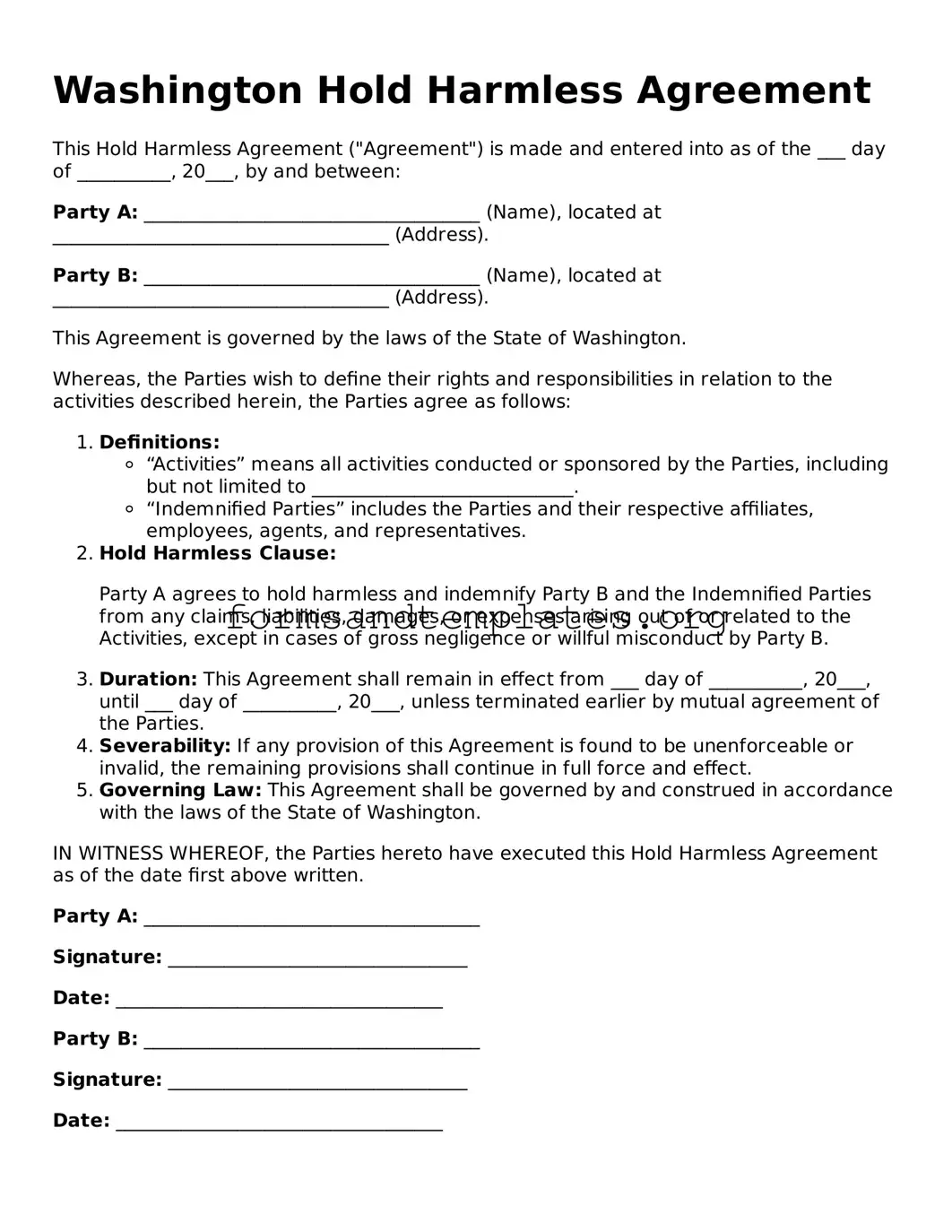Washington Hold Harmless Agreement
This Hold Harmless Agreement ("Agreement") is made and entered into as of the ___ day of __________, 20___, by and between:
Party A: ____________________________________ (Name), located at ____________________________________ (Address).
Party B: ____________________________________ (Name), located at ____________________________________ (Address).
This Agreement is governed by the laws of the State of Washington.
Whereas, the Parties wish to define their rights and responsibilities in relation to the activities described herein, the Parties agree as follows:
- Definitions:
- “Activities” means all activities conducted or sponsored by the Parties, including but not limited to ____________________________.
- “Indemnified Parties” includes the Parties and their respective affiliates, employees, agents, and representatives.
- Hold Harmless Clause:
Party A agrees to hold harmless and indemnify Party B and the Indemnified Parties from any claims, liabilities, damages, or expenses arising out of or related to the Activities, except in cases of gross negligence or willful misconduct by Party B.
- Duration: This Agreement shall remain in effect from ___ day of __________, 20___, until ___ day of __________, 20___, unless terminated earlier by mutual agreement of the Parties.
- Severability: If any provision of this Agreement is found to be unenforceable or invalid, the remaining provisions shall continue in full force and effect.
- Governing Law: This Agreement shall be governed by and construed in accordance with the laws of the State of Washington.
IN WITNESS WHEREOF, the Parties hereto have executed this Hold Harmless Agreement as of the date first above written.
Party A: ____________________________________
Signature: ________________________________
Date: ___________________________________
Party B: ____________________________________
Signature: ________________________________
Date: ___________________________________
